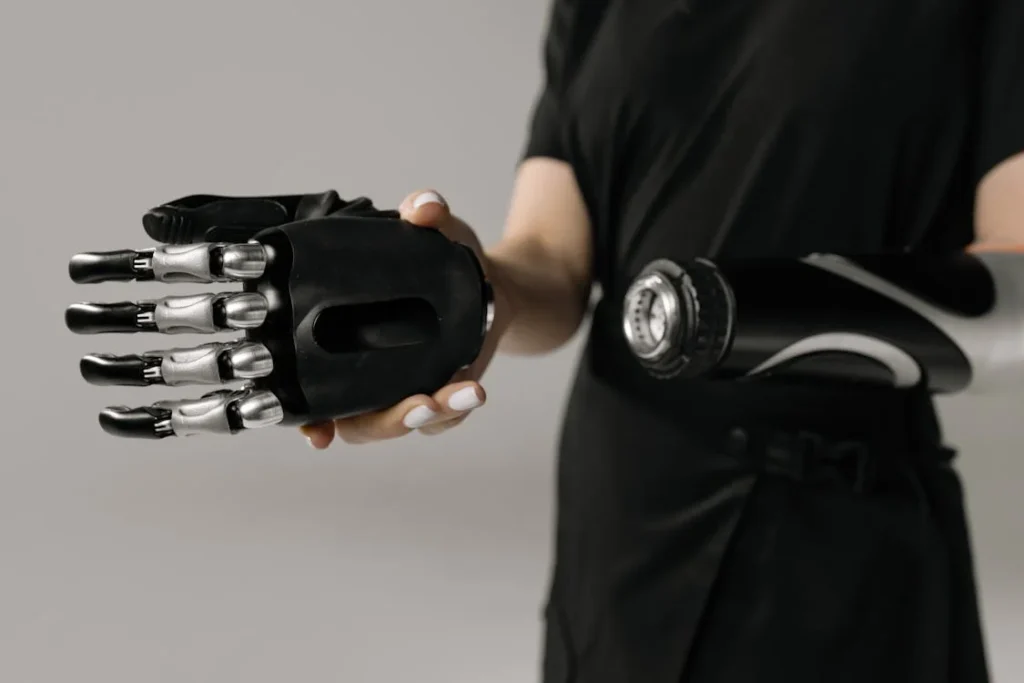Technology is changing the way people with disabilities interact with the world. From mobility aids to communication tools, assistive technology is evolving faster than ever, offering new levels of independence and inclusion. What once seemed impossible—such as thought-controlled prosthetics, AI-powered assistants, and smart environments that adapt to individual needs—is now becoming a reality.
The future of accessibility is about more than just improving existing solutions. It is about redefining how people with disabilities engage with their surroundings, ensuring that technology is not just assistive but truly empowering. Innovations in artificial intelligence, robotics, and wearable devices are paving the way for a world where accessibility is seamless and intuitive.
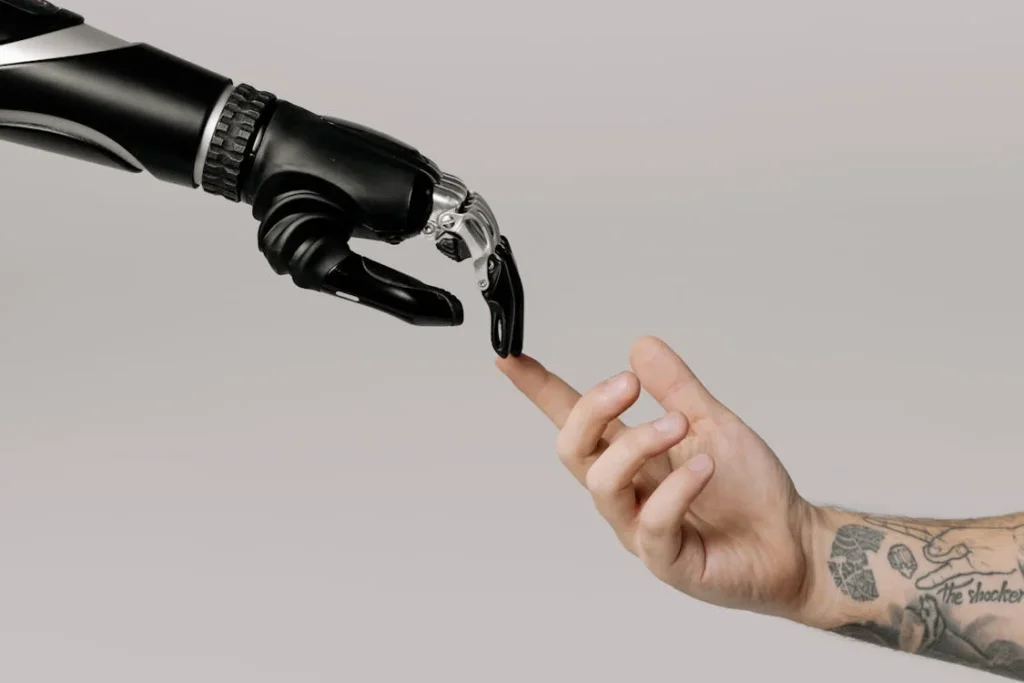
The Rise of AI-Powered Assistive Technology
Artificial intelligence is transforming accessibility by providing real-time solutions tailored to individual needs. AI-powered assistive technology is becoming more advanced, enabling people with disabilities to interact with the world more naturally and independently.
From smart assistants that understand speech patterns to AI-driven prosthetics that learn user behavior, this technology is bridging gaps that once seemed insurmountable.
AI for Communication and Speech Assistance
For individuals with speech impairments, AI-driven voice synthesis is revolutionizing the way they communicate.
Traditional text-to-speech software has been around for years, but modern AI is taking it further by creating natural-sounding voices that match the user’s tone and speech patterns.
Some systems even learn a person’s voice before they lose their ability to speak, preserving their unique way of communicating.
Smart communication apps are also improving accessibility by providing instant real-time transcription. AI-based tools now allow deaf and hard-of-hearing individuals to receive live captions for conversations, phone calls, and video meetings.
These applications can even translate sign language into text and spoken words, making interactions more inclusive in workplaces, public spaces, and social settings.
AI-Driven Mobility Solutions
Mobility technology is advancing rapidly with AI-powered navigation tools that assist people with visual impairments. Smart glasses equipped with AI can analyze surroundings, recognize objects, and provide spoken guidance.
Some of these devices can even detect facial expressions and emotions, helping users navigate social interactions more intuitively.
Self-driving wheelchairs and AI-powered exoskeletons are also pushing mobility assistance to new heights. These devices use sensors and machine learning to adapt to the user’s movement, providing smoother navigation over uneven terrain and in crowded spaces.
Exoskeletons, in particular, are helping individuals with paralysis regain mobility by responding to brain signals and adjusting movements in real time.
Personalized AI for Daily Assistance
The future of accessibility includes AI assistants that do more than follow basic voice commands. Advanced systems are being developed to understand users’ habits and preferences, providing proactive assistance before they even ask for it.
These assistants can remind users to take medication, adjust smart home settings based on their needs, and even predict potential obstacles in their environment.
For individuals with cognitive disabilities, AI-powered reminders and scheduling tools are becoming essential. These systems help users manage their daily routines by providing step-by-step guidance for tasks such as cooking, traveling, and managing finances.
By learning a user’s routine, these AI assistants can adapt over time, offering a level of support that feels more personalized and intuitive.
As artificial intelligence continues to evolve, it will play an even greater role in breaking down barriers and making accessibility more effortless than ever.
AI-powered assistive technology is not just about helping people with disabilities function—it is about giving them the freedom to navigate the world on their own terms.
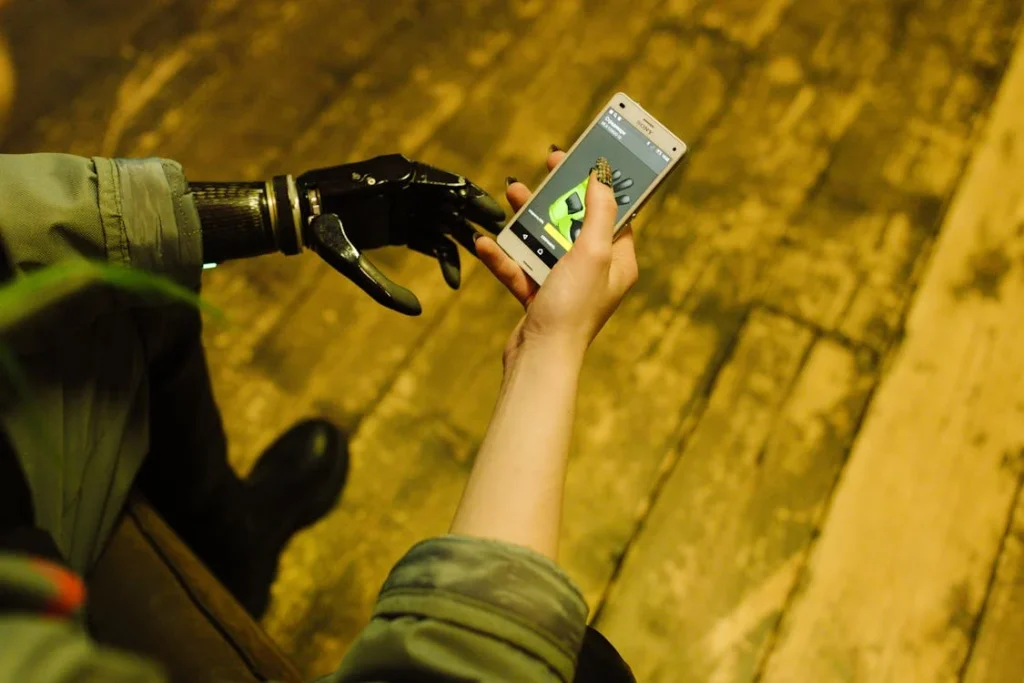
The Future of Prosthetics and Wearable Technology
Prosthetic technology has come a long way, evolving from simple mechanical limbs to advanced bionic devices that mimic natural movement.
In the coming years, breakthroughs in neuroscience, robotics, and material science will make prosthetics more functional, comfortable, and intuitive than ever before.
Wearable assistive devices are also becoming smarter, enhancing mobility and independence for individuals with disabilities.
Brain-Controlled Prosthetics
One of the most exciting developments in prosthetic technology is the rise of brain-controlled limbs. These devices use neural interfaces to connect directly with the user’s nervous system, allowing for natural movement and precise control.
Unlike traditional prosthetics that rely on muscle contractions, brain-controlled prosthetics interpret electrical signals from the brain and translate them into motion.
Researchers are now developing prosthetic hands that provide sensory feedback, allowing users to feel textures, pressure, and even temperature.
This is made possible through advanced neural implants that send signals from the prosthetic back to the brain, restoring a sense of touch.
With continued advancements, future prosthetics may function almost as seamlessly as biological limbs, offering users unprecedented levels of control and comfort.
Adaptive Wearable Technology
Wearable assistive devices are playing a crucial role in improving accessibility. Smart exoskeletons are already helping individuals with spinal cord injuries and mobility impairments regain movement.
These robotic suits support the user’s body, providing strength and stability while walking. AI-powered versions of these devices will soon be able to adapt in real time, adjusting to changes in terrain and movement patterns.
For individuals with vision impairments, wearable technology is becoming increasingly sophisticated. Smart glasses equipped with cameras and AI can analyze surroundings, recognize objects, and read text aloud.
Some models even offer real-time facial recognition, helping users identify people in social settings. As these devices continue to evolve, they will provide even greater independence, making it easier to navigate public spaces and interact with others.
Smart Fabrics and Assistive Clothing
The future of accessibility also includes innovations in clothing. Researchers are developing smart fabrics embedded with sensors that can monitor body movements, detect pressure points, and provide real-time feedback.
These fabrics can be used in prosthetic liners to improve comfort, in gloves that enhance grip strength for individuals with limited dexterity, and in clothing that provides posture support for individuals with muscular conditions.
For individuals with speech impairments, researchers are working on wearable devices that translate sign language into text or spoken words.
These innovations will make communication more seamless, bridging the gap between sign language users and those who do not understand it.
The integration of wearable technology with AI and robotics is creating a future where assistive devices are more responsive and user-friendly.
As these innovations continue to advance, individuals with disabilities will have access to smarter, more personalized solutions that enhance their independence and improve their quality of life.
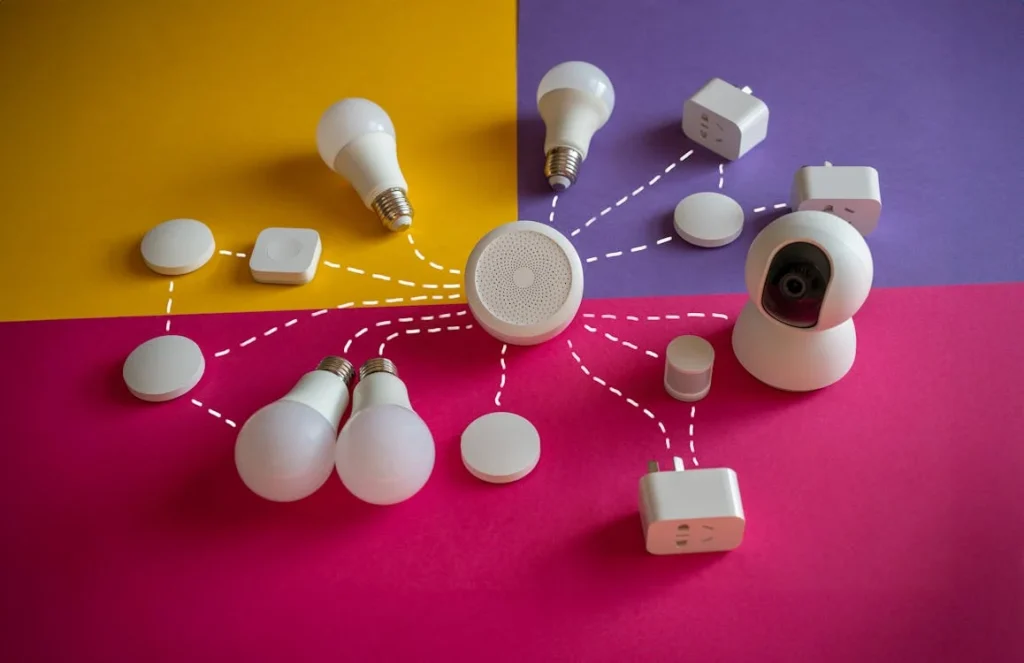
Smart Homes and Inclusive Living Environments
The next generation of assistive technology extends beyond individual devices to entire living environments. Smart home innovations are transforming how people with disabilities interact with their surroundings, allowing for greater independence and control over daily life.
Through voice commands, AI automation, and adaptive technologies, homes are becoming more intuitive, accessible, and personalized.
Voice-Controlled Home Automation
For individuals with mobility impairments, voice-activated smart home technology is eliminating the need for physical effort in managing household tasks.
AI-powered voice assistants like Amazon Alexa, Google Assistant, and Apple Siri can now control lighting, adjust thermostats, lock and unlock doors, and even operate household appliances.
Instead of relying on physical switches or remote controls, users can simply speak a command to manage their environment.
Smart kitchens are also becoming more accessible. Voice-controlled ovens, smart refrigerators, and AI-powered cooking assistants can help individuals with disabilities prepare meals with ease.
Some smart kitchen appliances can read recipes aloud, adjust cooking temperatures automatically, or even notify users when ingredients are running low. These innovations are reducing dependence on caregivers and enabling more independence in daily living.
AI-Powered Safety and Security
Home security is another area where accessibility technology is making a difference. Smart doorbells with video feeds allow users to see and speak with visitors without needing to physically open the door.
AI-driven security systems can recognize familiar faces, detect movement, and send alerts if something unusual happens.
For individuals with hearing impairments, smart security systems can provide visual and haptic alerts instead of traditional sound-based alarms.
These systems can integrate with wearable devices, sending vibrations or text-based notifications to alert users of emergencies such as fire alarms or break-ins.
Adaptive Furniture and Smart Assistive Devices
Future accessibility innovations will also include adaptive furniture that automatically adjusts to the needs of the user.
Adjustable beds, motorized wheelchair-friendly desks, and robotic chairs that assist with standing and sitting are already being developed. Some of these devices will integrate AI, allowing them to learn user preferences and make automatic adjustments for maximum comfort.
In bathrooms, AI-powered accessibility tools such as smart mirrors with voice-controlled settings, automated faucets, and sensor-based toilet seats are enhancing hygiene and safety for individuals with mobility challenges.
These innovations are removing physical barriers and making essential daily activities more manageable.
The Integration of Smart Cities
Beyond individual homes, entire cities are starting to adopt smart accessibility features. AI-powered street navigation systems, real-time accessibility updates for public transport, and sensor-based crosswalks are making urban spaces more inclusive.
Smart bus stops that provide audio and braille-based updates, interactive kiosks that assist users with disabilities, and AI-driven navigation apps are redefining accessibility in public spaces.
The goal of smart home and smart city innovations is to create a world where accessibility is embedded into the very fabric of daily life.
As technology advances, individuals with disabilities will be able to move through their environments with greater ease, confidence, and independence.
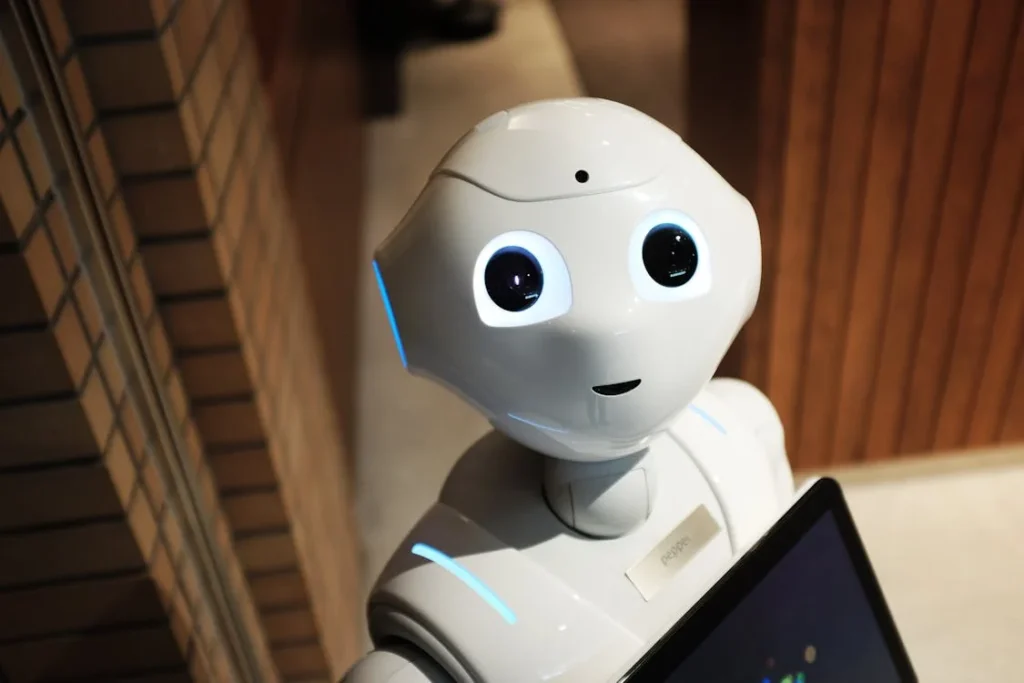
The Role of Robotics in Accessibility
Robotics is playing an increasingly vital role in assistive technology, offering solutions that enhance mobility, communication, and daily living for people with disabilities.
Advancements in artificial intelligence and machine learning are making robotic assistance more intuitive, enabling users to perform tasks that were once impossible without human help.
From robotic prosthetics to AI-powered service robots, the future of accessibility is being shaped by intelligent machines designed to support independence.
Robotic Assistants for Daily Living
AI-powered robotic assistants are becoming an essential part of accessible living. These robots are designed to help with tasks such as fetching objects, opening doors, and providing reminders for medications or appointments.
Unlike traditional assistive devices, robotic assistants can adapt to user needs, learning routines and responding to personalized voice commands.
Japan has been at the forefront of developing social companion robots that provide both emotional and physical support.
Some of these robots are designed to assist individuals with cognitive disabilities by offering reminders, engaging in conversation, and detecting signs of distress.
As these systems become more sophisticated, they will be able to provide companionship while also ensuring safety and independence.
Robotic Mobility Aids
For individuals with severe mobility impairments, robotic wheelchairs and exoskeletons are revolutionizing movement.
Unlike traditional wheelchairs, AI-driven robotic wheelchairs can navigate independently, avoiding obstacles and adjusting speed based on surroundings. Some models use brain-computer interfaces, allowing users to control their movement with simple thought commands.
Robotic exoskeletons are another breakthrough, particularly for individuals with spinal cord injuries. These wearable devices support the body and provide powered movement, allowing users to walk, climb stairs, and even stand independently.
With AI integration, exoskeletons are becoming more adaptive, learning a user’s movement patterns and adjusting accordingly for smoother, more natural motion.
Robotic Prosthetics with Sensory Feedback
Robotic prosthetics are advancing beyond simple mechanical limbs to devices that mimic real muscle movement and sensation.
Next-generation bionic limbs are equipped with sensors that detect pressure, texture, and temperature, providing feedback to the user’s nervous system.
This breakthrough is enabling people with limb loss to regain not just mobility but also the ability to feel through their prosthetics.
These prosthetic advancements are being powered by brain-computer interfaces, which allow users to control artificial limbs as if they were natural extensions of their body.
The combination of AI, robotics, and neuroscience is making prosthetic technology more intuitive, restoring fine motor skills and offering a level of functionality that was once only imagined in science fiction.
The Future of Human-Robot Interaction
As robotic assistive technology continues to evolve, the interaction between humans and machines will become more seamless. AI-powered robots will be able to recognize emotions, anticipate user needs, and provide more personalized assistance.
The integration of natural language processing will allow users to communicate with their assistive robots effortlessly, making these devices feel more like trusted companions than tools.
The goal of robotics in accessibility is not just to provide support but to enhance the quality of life for individuals with disabilities.
By combining AI-driven automation with human-centered design, future assistive robots will help people achieve greater independence, making everyday life more manageable and fulfilling.

The Future of Accessibility in Education and Employment
Technology is transforming education and employment opportunities for people with disabilities. With the rise of AI-driven learning tools, adaptive software, and remote work innovations, accessibility is becoming a priority in classrooms and workplaces.
The future of inclusive education and employment is centered around creating environments where individuals of all abilities can thrive without barriers.
AI-Powered Learning Tools
Students with disabilities often face challenges in traditional education settings, but AI-powered learning tools are changing that.
Speech-to-text software helps students with dyslexia and motor impairments take notes effortlessly, while real-time captioning ensures that deaf and hard-of-hearing students can follow lectures without difficulty.
AI-driven tutors are also being developed to provide personalized learning experiences, adapting to each student’s needs and learning style.
For visually impaired students, AI-powered reading assistants can convert printed text into audio, making textbooks and educational materials more accessible.
Some smart learning devices now offer interactive braille displays, allowing students to engage with digital content in a tactile way. These innovations ensure that students with disabilities have equal access to knowledge and learning opportunities.
Virtual and Augmented Reality in Education
Virtual reality (VR) and augmented reality (AR) are opening up new possibilities for inclusive education. Students who struggle with traditional classroom environments can benefit from immersive learning experiences that make subjects more engaging.
For example, VR can simulate historical events, scientific experiments, or real-world scenarios, making lessons more interactive and accessible.
AR-powered applications are also helping students with cognitive disabilities by providing real-time guidance and visual instructions for tasks.
These tools break down complex activities into simple steps, helping individuals develop problem-solving and social skills. As VR and AR technology continues to improve, education will become more accessible, interactive, and inclusive.
Accessibility in Remote Work and Employment
The rise of remote work has created new opportunities for individuals with disabilities, allowing them to work in environments that suit their needs.
AI-driven workplace accessibility tools, such as screen readers, voice-controlled applications, and real-time transcription services, are making professional settings more inclusive.
Companies are increasingly adopting AI-powered hiring platforms that ensure fair evaluations of job candidates with disabilities.
These platforms use skills-based assessments rather than traditional interviews, reducing bias and ensuring equal opportunities. AI is also helping employers create personalized work environments by suggesting accommodations based on an employee’s specific needs.
The Role of AI in Workplace Adaptation
Future workplaces will integrate AI-driven accessibility solutions that allow employees with disabilities to work more efficiently.
Smart desks and voice-activated office systems will enable individuals with mobility impairments to control their workspace without physical effort. AI-powered virtual assistants will provide real-time support, scheduling tasks, setting reminders, and even transcribing meetings.
For individuals with cognitive disabilities, AI-driven task management systems will help with organization and focus, breaking down assignments into manageable steps.
AI chatbots and virtual mentors will provide guidance, ensuring that employees receive continuous support and professional development.
A More Inclusive Future in Education and Work
As technology continues to advance, the barriers to education and employment are gradually being removed. AI, virtual reality, and smart accessibility tools are ensuring that people with disabilities can learn, grow, and contribute to the workforce without limitations.
The future of accessibility in education and employment is about creating opportunities where everyone, regardless of ability, can reach their full potential.

The Role of AI and Big Data in Accessibility Innovation
The next generation of accessibility solutions will be shaped by artificial intelligence and big data. As more data is collected on accessibility challenges, AI-powered systems can analyze patterns, predict user needs, and create more inclusive environments.
By harnessing machine learning and real-time data, technology is becoming more adaptive and personalized, ensuring that individuals with disabilities receive the best possible support.
AI-Powered Predictive Assistance
One of the most promising innovations in assistive technology is predictive AI. These systems learn from user behavior, anticipate challenges, and offer solutions before a problem arises.
For example, an AI assistant can recognize when a wheelchair user is about to enter a building without a ramp and suggest an alternative route.
Similarly, AI-powered mobility apps can provide real-time accessibility updates for public transport, ensuring users avoid delays or obstacles.
For individuals with cognitive disabilities, predictive AI can offer structured support by recognizing patterns in daily routines.
If a user frequently forgets medication or appointments, the system can provide timely reminders and even adjust notifications based on changing habits.
These AI-driven systems act as personal assistants, ensuring that accessibility is integrated into daily life without requiring constant manual input.
Smart Cities and Data-Driven Urban Planning
The future of accessibility is closely linked to the rise of smart cities. AI and big data are being used to design urban environments that prioritize inclusion.
Smart traffic lights with AI-powered sensors can detect pedestrians with disabilities and extend crossing times accordingly. Public transportation systems are also integrating AI to provide real-time updates on accessible routes, elevator functionality, and transit delays.
Urban planning departments are now using big data to identify areas where accessibility improvements are most needed. By analyzing movement patterns, city officials can determine which public spaces require additional ramps, braille signage, or assistive infrastructure.
AI-powered mapping tools allow cities to create accessibility-friendly environments, ensuring that public spaces, roads, and buildings meet the needs of all residents.
AI-Driven Accessibility Audits
Businesses and organizations are beginning to use AI-powered tools to assess their accessibility compliance. Instead of relying solely on manual inspections, companies can use AI-driven audits to identify barriers in their buildings, websites, and services.
These tools scan digital and physical environments for accessibility issues, providing recommendations on how to make spaces more inclusive.
For websites and online platforms, AI-powered accessibility tools can automatically detect and fix design flaws that create challenges for users with disabilities.
For example, an AI system can ensure that images have alt-text, adjust color contrast for readability, and generate accurate closed captions for video content.
This technology is helping businesses and government institutions comply with accessibility regulations while improving user experience.
Ethical Considerations and Inclusive AI Development
While AI and big data have the potential to revolutionize accessibility, ethical considerations must be addressed to ensure these technologies benefit everyone.
AI systems should be developed with diverse datasets that include people with disabilities to avoid biases. If AI algorithms are not trained on inclusive data, they risk overlooking critical accessibility needs.
Advocates and researchers are working to ensure that AI-driven accessibility tools are designed with direct input from individuals with disabilities.
Inclusive design practices ensure that new technologies are not only functional but also aligned with the real-world experiences of those who rely on them.
By prioritizing ethical AI development, the future of accessibility will be shaped by solutions that truly reflect the needs of diverse users.
A Future Where Technology Adapts to People
AI and big data are paving the way for a world where technology adapts to people, rather than the other way around.
As predictive AI, smart cities, and data-driven accessibility audits become more advanced, individuals with disabilities will experience greater independence, mobility, and inclusion.
The next wave of assistive technology will be proactive rather than reactive, ensuring that accessibility is built into every aspect of modern life.
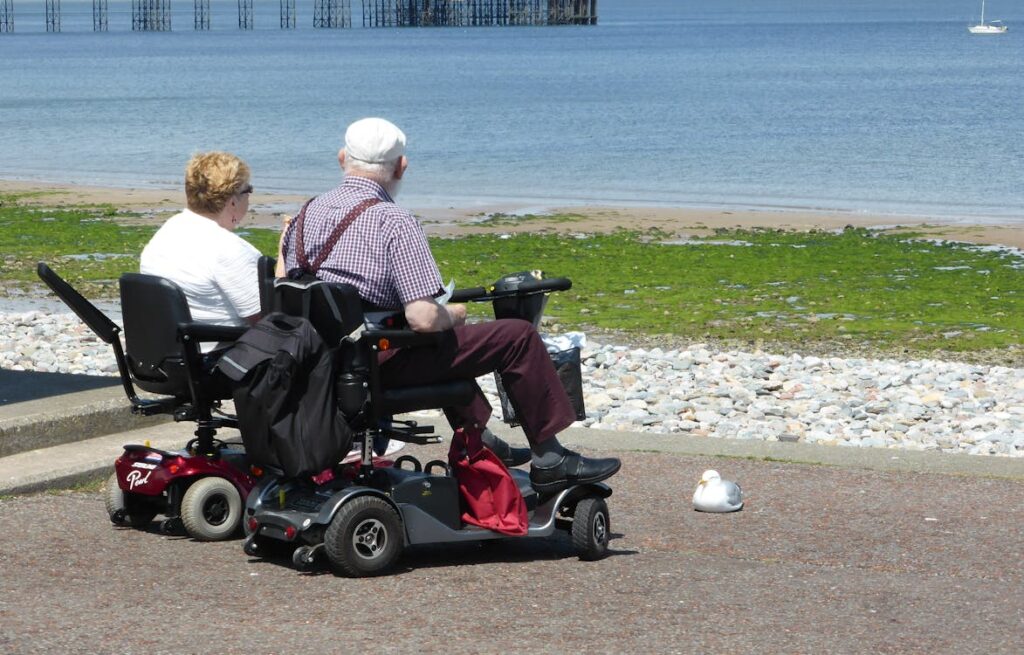
Conclusion
The future of accessibility is being shaped by groundbreaking innovations in AI, robotics, wearable technology, and smart environments. These advancements are not just improving assistive devices but redefining how people with disabilities interact with the world. From brain-controlled prosthetics to AI-powered personal assistants, technology is becoming more intuitive, adaptive, and personalized.
Smart cities, predictive AI, and data-driven accessibility solutions are ensuring that public spaces, workplaces, and homes are more inclusive than ever. As these innovations continue to evolve, barriers to mobility, communication, and education will be further reduced, allowing individuals with disabilities to live with greater independence and confidence.
True accessibility is not just about adding features—it is about creating a world where inclusion is the standard, not an afterthought. By embracing emerging technologies and prioritizing ethical development, we are moving toward a future where every individual, regardless of ability, can navigate life without limitations. The future of accessibility is not just promising—it is transformative.



